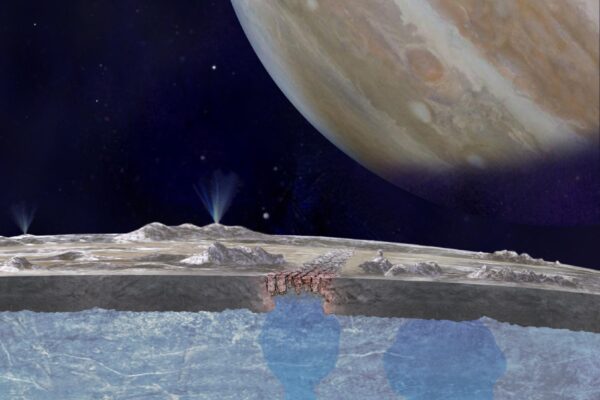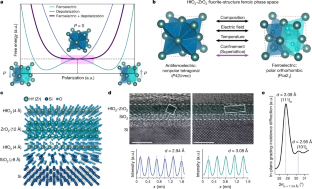2022-03-24 テキサス大学オースチン校(UT Austin)

An artist’s interpretation of liquid water on the surface of the Europa pooling beneath chaos terrain.
Credit: : NASA/JPL-Caltech
この理論は他の研究者によっても提案されているが、研究者らは、月の「カオス地形」(氷の世界の4分の1を覆う亀裂、尾根、氷塊からなる地形)の下の塩水に乗って酸素が移動する過程を、世界で初めて物理学に基づいてコンピューターシミュレーションすることにより、この理論を検証している。
「今回の研究により、このプロセスが可能な範囲に入った」と、主席研究員のマーク・ヘッセ(UT Jackson School of Geosciences Department of Geological Sciences 教授)は述べています。”エウロパ地下海の居住可能性に関する未解決問題の1つとされているものに対する解決策を提供するものです。”
この研究は、最近、Geophysical Research Lettersという雑誌に掲載されました。
<関連情報>
- https://news.utexas.edu/2022/03/24/on-jupiters-moon-europa-chaos-terrains-could-be-shuttling-oxygen-to-ocean/
- https://agupubs.onlinelibrary.wiley.com/doi/abs/10.1029/2021GL095416
密度駆動型塩水パーコレーションによるエウロパの氷シェル内の酸化剤下降輸送 Downward Oxidant Transport Through Europa’s Ice Shell by Density-Driven Brine Percolation
Marc A. Hesse,Jacob S. Jordan,Steven D. Vance,Apurva V. Oza
Geophysical Research Letters First published: 10 February 2022
https://doi.org/10.1029/2021GL095416
Abstract
Jupiter’s moon Europa is thought to have an ocean beneath its ice shell and the habitability of the internal ocean depends on the availability of redox gradients. Downward transport of radiolytic materials produced at the surface through the ice shell sets the flux of oxidants into the ocean. Here, we propose that oxidants are transported through the ice shell by the drainage of near-surface brines formed concurrently with chaotic terrains. We estimate that Europa’s porous regolith contains 3.7 × 1014 to 5.6 × 1018 mol (1.2 × 1013 − 1.8 × 1017 kg) of trapped O2. Simulations of coupled melt-migration and eutectic phase behavior show that brines drain before they refreeze, delivering ∼85% of the surface oxidants to the ocean on timescales of 2 × 104 years. From the distribution of chaotic terrains and from Europa’s surface age we estimate that brine drainage could deliver O2 to the ocean at rates of 2.0 × 106 to 1.3 × 1010 mol/yr (0.002−13.2 kg/s).



